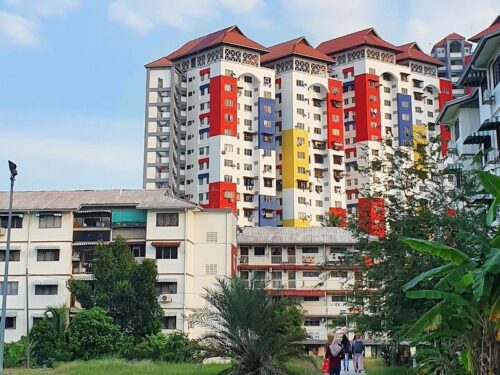A RECENT study found that four out of five families that move into affordable housing projects such as People Housing Programmes (PPR) will likely end up living there for the rest of their lives.
Some 80% of low- and medium-cost (LMC) housing residents are unable or unwilling to leave their LMC housing once they are rooted there as they may be facing a lack of options or access to financial resources.
They may also not want to leave their current homes as they could be in a strategic location (close to public transportation, key employment centres and amenities such as schools), according to the study by property database technology company PropertyGuru Datasense.
On the other hand, the main reason for moving out of LMC housing is that once people start having a family, their need for space and privacy increases, PropertyGuru DataSense general manager Joe Thor said in a statement today.

Even so, while they moved out to mainly landed terrace houses, they relocated to outer districts as they are cheaper, underscoring the challenges affordable housing dwellers face throughout their lives.
“LMC housing should ideally be a transitional step in your property journey – we saw that the average period from when it was first bought till the time one exits is seven years,” added Thor.
“Unfortunately, this is not the case for four out of five LMC owners.”
It was estimated in 2013 that public housing residents, spread across more than 3,000 public housing projects, numbered more than 1.7 mil Malaysians in Kuala Lumpur and Selangor.
PropertyGuru DataSense’s study aimed at unearthing the desirability of LMCs within the Klang Valley and understanding the various motivations that drive the bottom 40 income group (B40s) as well as those about to move into the middle 40 income group (M40) when it comes to property.
Researchers examined approximately 7,900 LMC projects within Kuala Lumpur and Selangor and about 139,500 sales transactions from the 1970s where LMC housing prices ranged from RM25,000 to a maximum of RM350,000.
They discovered that although LMC housing comprised just 10% of the total number of housing projects in those locations, they made up 18% of total sales transactions – indicating a demand for these types of homes.
“Key feature”
A key feature of the LMC housing policy is the option for those who are not so well off to own or have a fair shake at home ownership through loans or rent-to-own schemes.
However, for LMC housing built in the 1970s to 1980s, these old properties tend to suffer from the lack of quality maintenance, thus affecting the overall look and feel, other than things that directly affect quality of life such as lifts that frequently break down and insufficient parking.

Even so, the demand for these properties at what is now considered strategic locations remains robust after development finally “caught up” with these locations, such as the emergence of nearby business centres or the extension of urban rails.
Thor said this is why buying into older LMC housing in strategic locations is a trade-off most Malaysians are willing to make – for the sake of convenience.
This is also why 30% of LMC homes that hit the open market are snapped up by property investors while the remaining 70% are first-time home buyers.
PropertyGuru DataSense’s study raises many implications, the most obvious one being that the Government will need to continue building or subsidising affordable housing as the bulk of the population is still dependent on it and does not “upgrade” or move away.
However, a lack of upward mobility in housing poses implications for planners and authorities as they try to ensure affordable and decent housing in urban centres where land is scarce and increasingly expensive, coupled with increasing construction prices.
“If an LMC housing resident wanted to upgrade in KL, they would be severely limited in their options,” Thor noted. “The next available option would be to move further away to another district, especially as the ideal housing type for LMC residents is landed terrace homes.”
There is also a need to acknowledge that not all LMC housing are the same – for instance, even though PPRs are sold at RM42,000, PPRs in Kuala Lumpur or Petaling will appreciate faster than those located in Hulu Selangor or Sabak Bernam.
To moderate demand and provide a fairer deal to affordable housing subscribers, Thor said differential pricing needs to be adopted to make a distinction between the varying costs of land in more popular locations versus places where appreciation is expected to be much slower.
“On the other hand, there is an overhang of private housing, so my point of view is that a public-private partnership should be another option where the Government provides assistance to the B40 group to rent from the private market,” he added. – Sept 20, 2022
Main photo credit: EdgeProp










